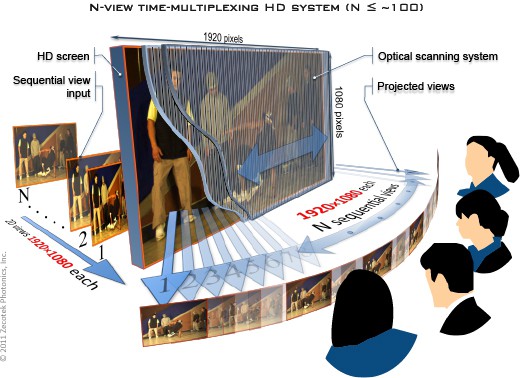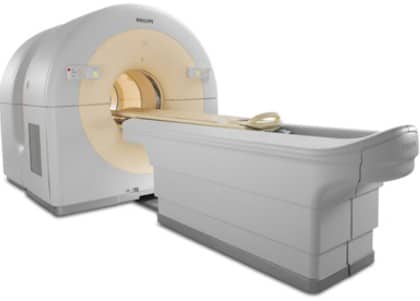In July, scientists at Switzerland’s CERN research centre unveiled the latest results in their search for the Higgs boson, a subatomic particle believed to be key to the formation of stars, planets and, ultimately, life.
The particle, first proposed by several physicists including Peter Higgs, is the final piece of the Standard Model, a theory that describes the building blocks of the universe. The eleven other particles predicted by the model have been found and finding the Higgs would validate the model.
How important is the Higgs boson discovery? It “…is up there with Copernicus…” says Yale University professor of mechanical engineering Ainissa Ramirez, adding: “The Higgs boson is the biggest scientific discovery of the 21st Century. Period.”
Vancouver’s Zecotek Photonics (TSXV:ZMS) has a relationship with CERN that goes back to 2009, when the famed scientific research centre purchased Zecotek’s proprietary MAPD-3N Micro-pixel Avalanche Photo Diodes.
The relationship expanded with Zecotek’s involvement in the CERN’s ALICE project. ALICE, an acronym for “A Large Ion Collide Experiment”, is one of the largest experiments in the world devoted to research in the physics of matter at an infinitely small scale. Cantech Letter recently talked to Zecotek CEO Faouzi Zerrouk about the company’s relevance to Higgs boson.
Dr. Zerrouk, in early July scientists at the CERN research centre in Switzerland revealed they found a new subatomic particle that could be the Higgs boson, or Higgs particle. What is the involvement of Zecotek in all this?
As scientists analyze the data, it is no yet clear whether this is the Higgs Boson as predicted by the Standard Model, or whether it is a Higgs Boson from the very much desired theory of supersymmetry, or maybe something else. In all cases, it is clear to the scientific community needs new and higher energies as compared to those delivered in the existing LHC in order to look for supersymmetry and other exotic particles as well as signatures of string theories and extra dimensions on which they depend. In order to do this, two main components are required; Scintillation materials and photo-detectors. One of the main issue with the existing crystals used in key LHC stations is blackening of the crystals. This dramatically reduces the signal intensity and clarity. This is readily solved by Zecotek’s LFS crystal. One of the many variants of the LFS crystal, has a substantially high radiation hardness and is therefore pretty much immune to blackening. Experiments at CERN have verified this. The same issue is applicable to photo-detectors. The existing APD’s (Photo-diodes) used in the LHC have very low survival rate due to high radiation. They are not able to withstand the next new high energies. Their other serious drawback as we go to the next intense level, is the lack of dynamic range or linearity. This is the number of pixels per square millimeter in the photo-detector. This is a very crucial parameter, considering the extremely large number of signals at high energies.The MAPD has been proven to be very robust and uniquely radiation hard for the next LHC phase. It also has the largest linearity ever registered in a photo-detector for this type of application. We are therefore confident that, if supersymmetry with all its structure and particles such as Higgs Bosons beyond the standard model, is a true aspect of our Universe then Zecotek has the components to probe this mysterious yet intuitive aspect of our World. The LHC is due to shut down in the next few months for maintenance which includes upgrades for the next phase. We look forward to playing a significant role in providing the adequate technologies for the ongoing scientific challenges.
_________________________
This story is brought to you by Cantech Letter sponsor BIOX (TSX:BX). The largest producer of biodiesel in Canada, BIOX’s proprietary production process has the capability to use a variety of feedstock, including recycled vegetable oils, agricultural seed oils, yellow greases and tallow. For more information CLICK HERE.
___________________________
This past February, Zecotek filed a US patent infringement lawsuit against Philips Medical and Saint Gobain. According to your court documents, you believe the infringement by this two parties was willful and deliberate. Can you give us an update on this situation?
We are confident in our law suit action. We are following the court procedures diligently. We have a first class litigation team and a very dedicated experienced patent lawyer. We have filed our infringement contentions and have provided the defendants counsels clear and substantial arguments that support our claims. Our crystal has very advantageous parameters for the next generation of PET scanners. We have strong patents supported by unique expertise. Our scientists have worked on this type of crystal material for more than two decades before Saint-Gobain. Our position is supported by World leading independent experts. We are in a good jurisdiction and we are confident that justice will be done and that our many years of efforts as a small innovation company will not be wasted by big companies.
The US Patent Office just granted Zecotek a new patent for its data acquisition technology for PET Scanners. What is the significance of this new patent?
This fully complements Zecotek’s imaging technologies. A PET scanner has three main parts; namely the crystal material, the photo-detetctors and the electronics which composes; the readout configuration and the data acquisition technology. Zecotek has now all the key components as well as the adequate strategic alliance to integrate a higher performance and cost competitive new generation PET scanner. This is now attracting substantial interest from technology investors and government institutions in emerging economies. Institutions that want to manufacture their own national PET machines.
Also in February, you showcased your Glasses-Free 3D Technology to a delegation from Sony. Are you still in discussion with potential industry partners for the integration of a cost competitive, high resolution, auto-stereoscopic flat screen 3D display, based on LCD and OLED panels?
Yes we are. Due to recent progress in discussions with a large OEM, I will not be able to say much at this stage.
Zecotek’s patent portfolio has continued to grow. You now own more than fifty patents and applications. What is the strategy to monetize them?
The ongoing aggressive program, is the full and complete protection of our unique patents. This is key for a company of our size. The patents are lodged in the three separate divisions, each with its own commercialization strategy. Licensing, merger/acquisition are the quickest way to capitalizing on and monetizing our IP and expertise.
________________________
_________________________
Leave a Reply
You must be logged in to post a comment.






 Share
Share Tweet
Tweet Share
Share




Comment